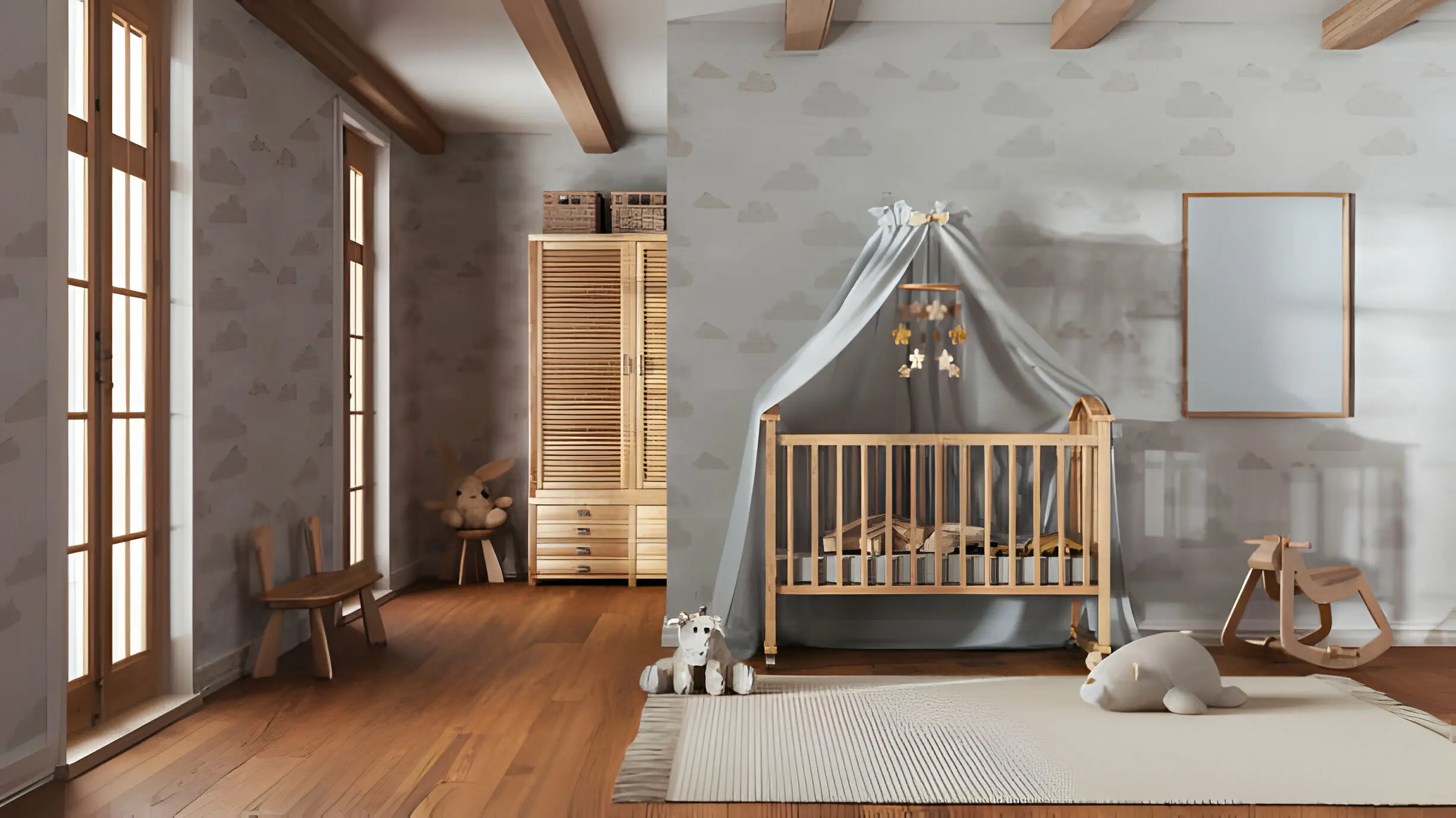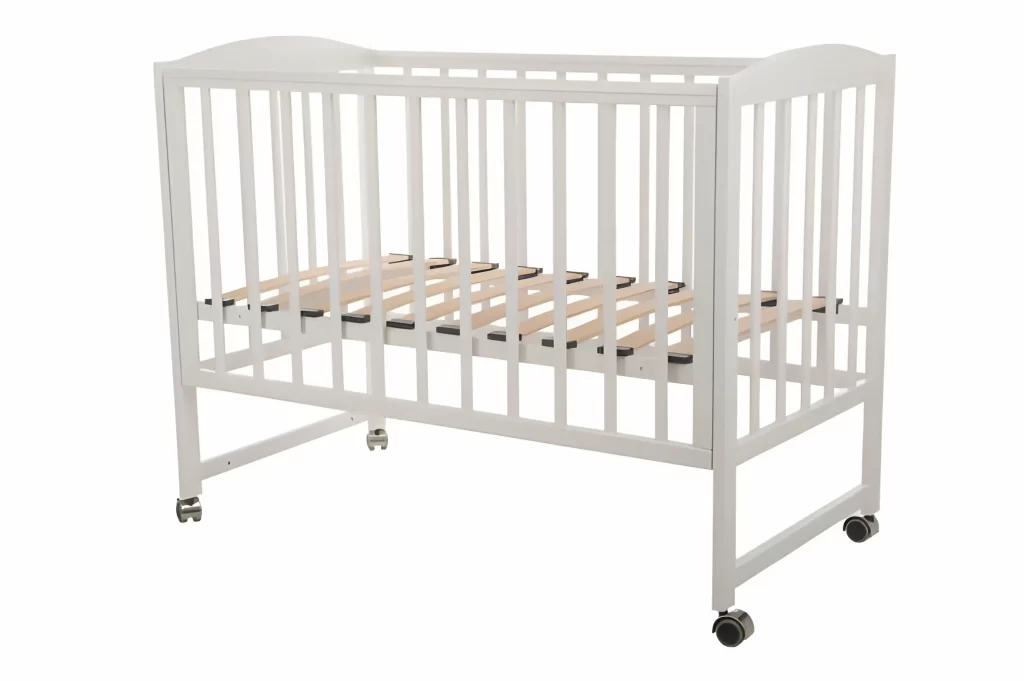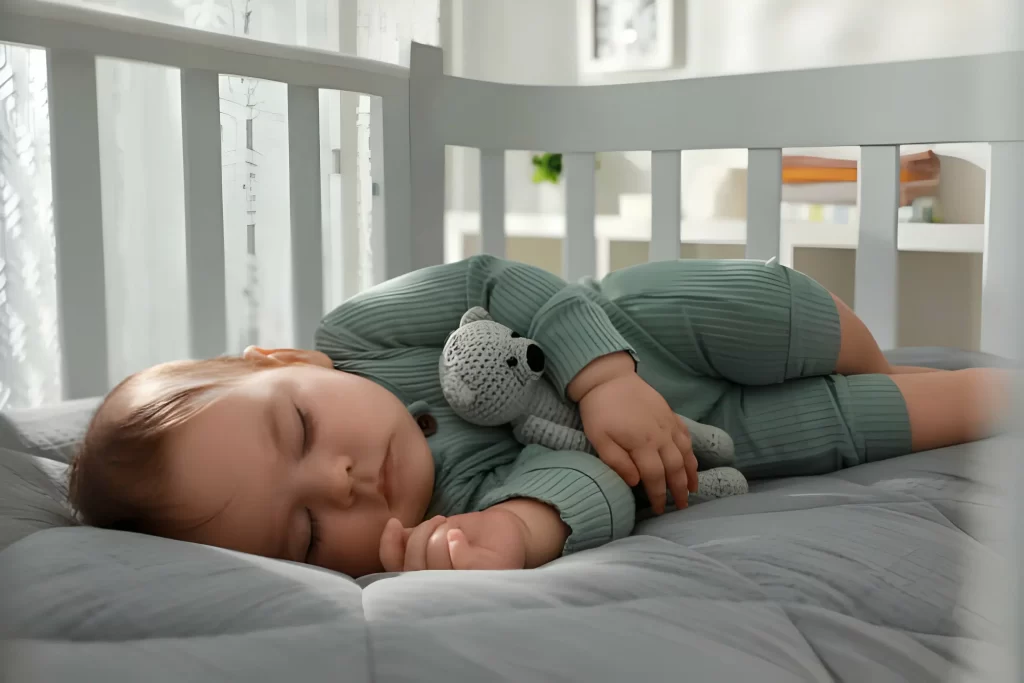Metal vs Wood Cribs: Which Is Better?

When preparing for a new baby, one of the biggest purchases parents must make is deciding on a crib. Parents today have two main options – traditional wood cribs or modern metal cribs. But how do you choose between these two common crib materials?
There are pros and cons to both metal and wood when it comes to factors like aesthetics, durability, safety, and cost. This guide examines the key differences between metal and wood cribs to help parents determine which is better for their needs.
Aesthetic Appeal and Versatility
Aesthetically, wood and metal cribs offer very different looks. Wooden cribs have a classic, timeless warmth, and elegance that many parents love.
The natural grain and range of wood stains give a relaxed, homey feel to a nursery space. Wood cribs can match decor styles from modern to farmhouse with the right stain or paint color.
Metal cribs have a sleek, contemporary look with crisper lines and fewer decorative details. They easily fit in more modern, minimalist, or eclectic nurseries. Their neutral finish makes it easy to add pops of color through bedding and décor. In terms of versatility, wood likely has the edge for fitting with various design aesthetics.
Durability and Longevity

When it comes to durability, metal cribs tend to have the advantage over wood. Metal is resistant to scratches, won’t warp or crack, and has no risk of pest infestations. Many metal cribs are made from steel or aluminum that can handle years of regular use and cleaning.
Wood is still reasonably durable, but may show wear like scratches or dings over 3-5 years of continuous use. Avoiding moisture damage will also be key for long-lasting wood pieces. In terms of longevity, properly cared-for metal and high-quality wood cribs can both last through multiple children.
The Sleeping Environment

The crib material affects the sleep experience too. Wood has noise-absorbing properties that make for a quieter sleep space. Metal cribs can transfer more sound and reverberation as babies move and cry. However, metal cribs are praised for increased airflow and breathability.
Their slatted sides allow ample air circulation which helps regulate temperature. This airflow is healthy for sleeping babies. Wood cribs with solid panels may retain more heat at night. Overall, wood likely provides a more soothing, tranquil sleep while metal excels at ample airflow.
Pros and Cons of Wood Baby Cribs
| Pros | Cons |
| Classic Aesthetics: Wood cribs have an heirloom quality with warm, elegant designs that fit many decorative styles. | Vulnerability to Pests: Wood is susceptible to termites, carpenter ants, and other pests if proper preventative steps aren’t taken. |
| Quieter Sleep Environment: Wood absorbs sound and vibration for a peaceful night’s sleep. | Heavier Weight: Wood cribs tend to be bulkier and heavier than metal, making them harder to move and assemble. |
| Variety of Colors: Wood cribs are available in a broad range of stain colors from natural to bold hues. | |
| Design Variety: Wood cribs come in many decorative styles from minimalist to ornate designs. | |
| Crafted with Sustainably Harvested Wood: Reputable brands use eco-friendly practices for sourcing high-quality woods. |
Pros and Cons of Metal Cribs
| Pros | Cons |
| Resistance to Pests: Metal has no issues with pest infestations, unlike wood materials. | Noise Levels: Metal can transfer more noise and vibration, disrupting a peaceful sleep environment. |
| Durability: Metal resists scratches, chips, and cracks better under years of use. | Limited Design Options: Metal crib styles tend to be minimalist with fewer decorative details. |
| Airflow: Metal cribs allow ample airflow thanks to their open-slatted sides. | Potential for Paint Issues: Metal paint may chip over time if the finish is low quality. |
Factors to Consider in Your Crib Choice
Safety Features
The most critical factor is choosing a crib that meets all current safety standards. Examine required safety elements like properly spaced slats, mattress support, and lack of cutout designs. Carefully review any recalls too. Convertible 4-in-1 cribs allow years of use but complicate access for long-term safety.
Budget Considerations
Typically, wood cribs start around $200 but often cost $500+ for high-end pieces. Basic metal cribs start around $100, with higher-end versions running $250+. Consider sales tax, accessories, and delivery fees too. Weigh the overall cost against years of use to make the optimal investment.
Also Read:
- Are Metal Cribs Safe for Babies
- How to Make an Old Crib Safe for Your Baby
- Why Should Crib Be Away From the Wall
- The Best Baby Cribs for Short Moms
Final Thoughts
When it comes to deciding between metal versus wood cribs, there are great options available in both categories. Take your nursery’s design, budget, and safety priorities into account. Wood offers unbeatable aesthetics and a peaceful sleep environment. But metal excels at durability, breathability, and pest resistance.
Look for quality construction and included safety features first, then choose the material that best fits your needs and lifestyle. With the range available today, you’re sure to find the perfect crib to welcome your new arrival.
